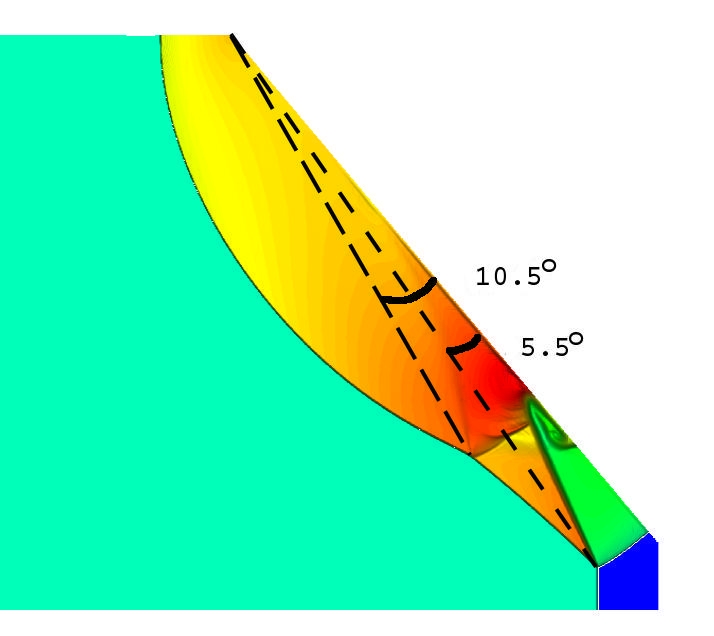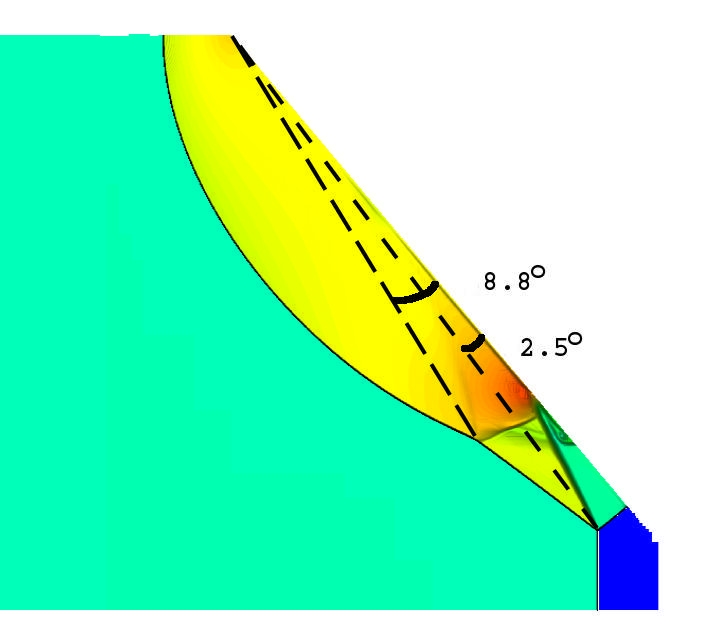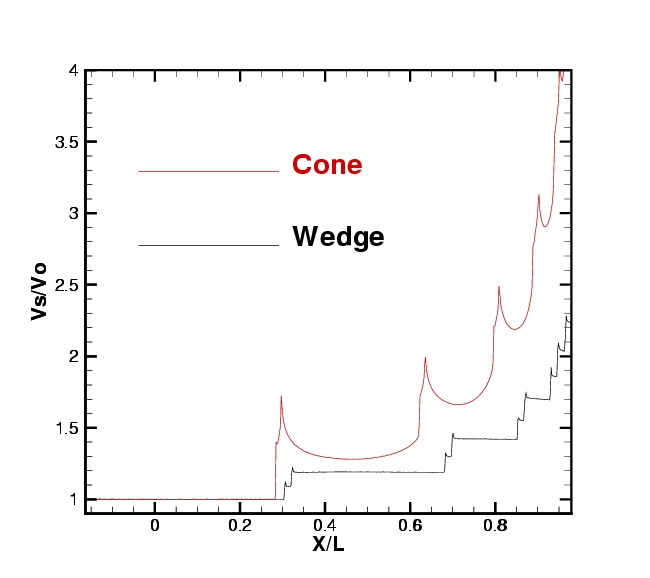Start of topic | Skip to actions
Conical (ie 3D) geometry vs Wedge-shaped (2D) shocktube.
The refected shocks in this 3D example have a component that is parallel to the axis of symmetry and hence are accelerated to this axis (as a cylindrical shock will naturally accelerate as it converges). This self-acceleration is missing in the 2D case where the reflected shocks (all shocks as a matter of fact) are planar (ie don't have the additional curvature of the conical geometry). This initially resluts in larger tripple point angles in the conical case and later in higher shock speeds.- Mach 6 shock entering a cone with 50degree half-angle:

- Mach 6 shock entering a wedge with 50degree half-angle:

- Centerline shock speeds: Cone Vs Wedge:
